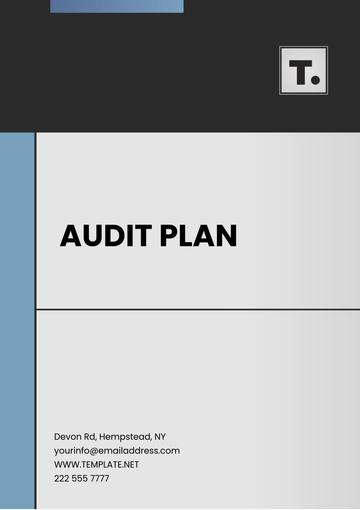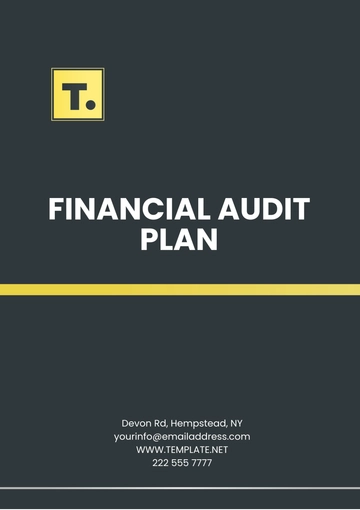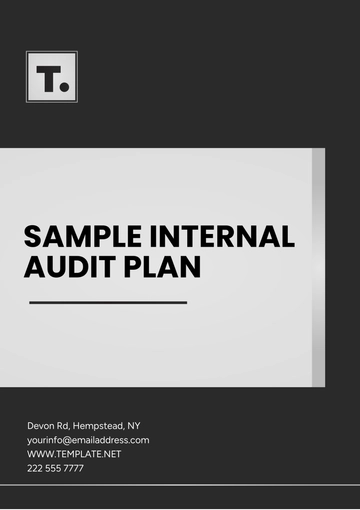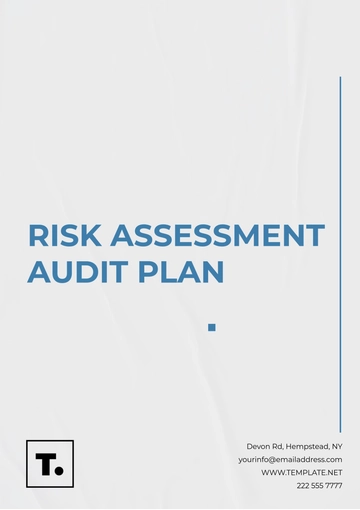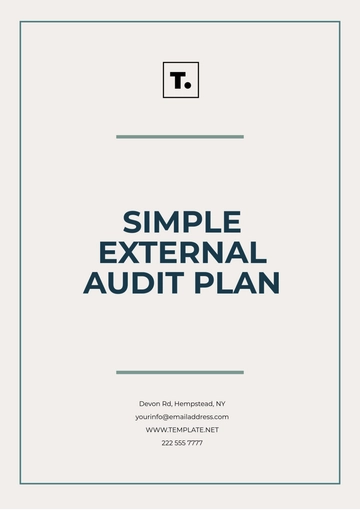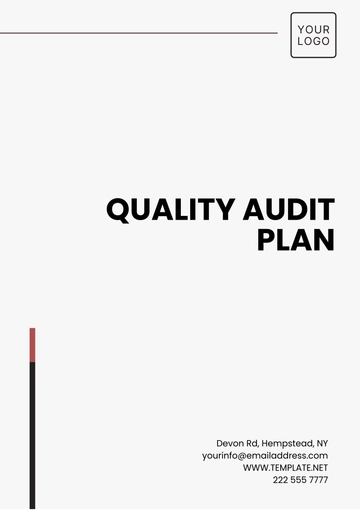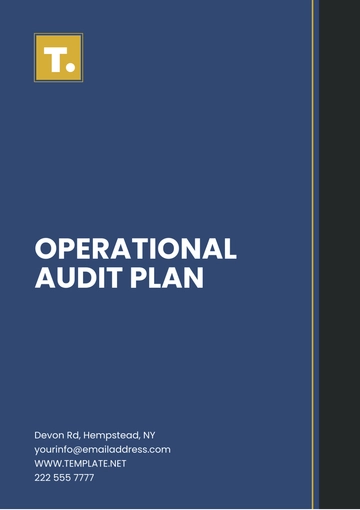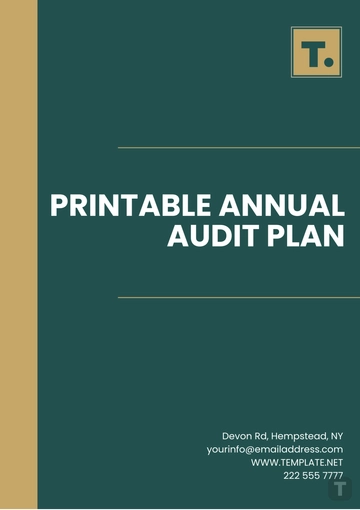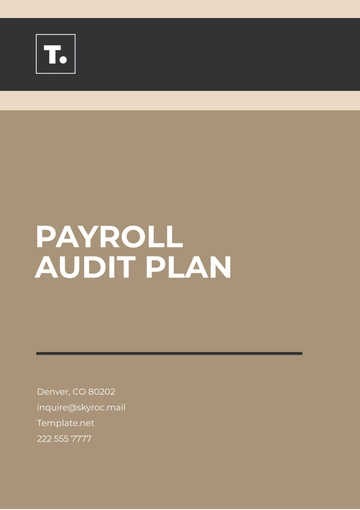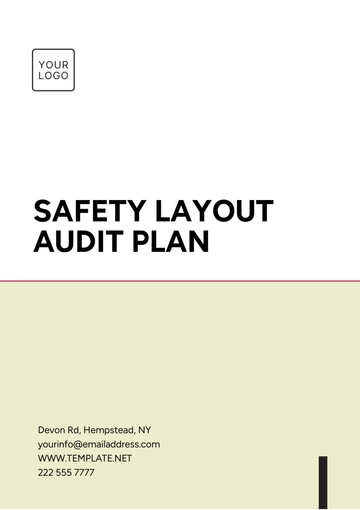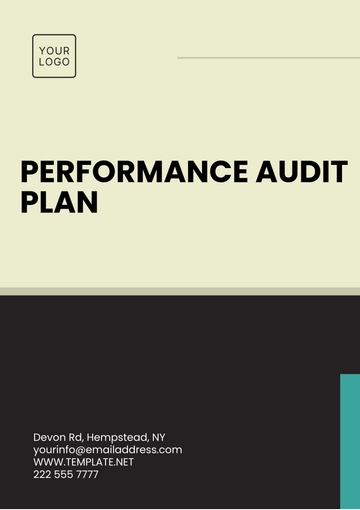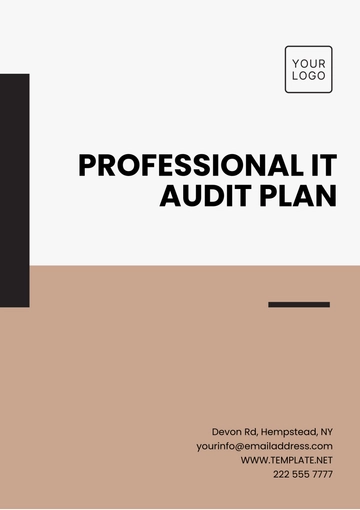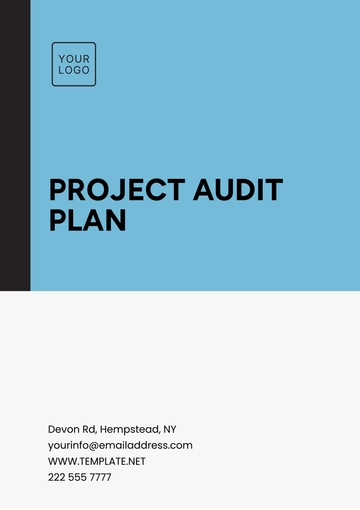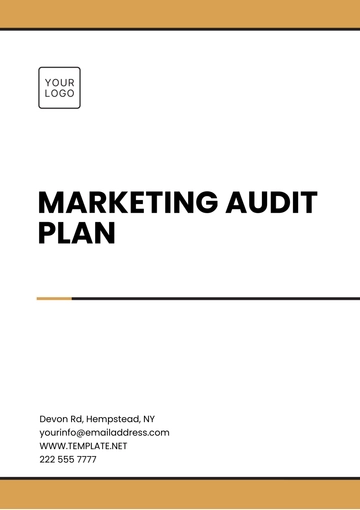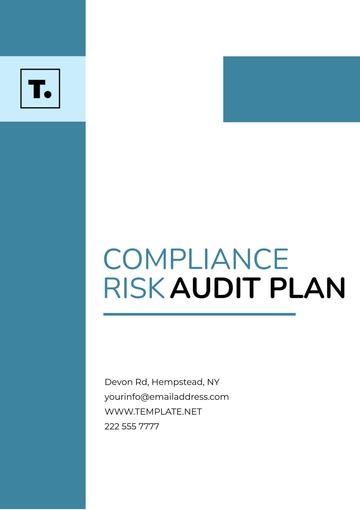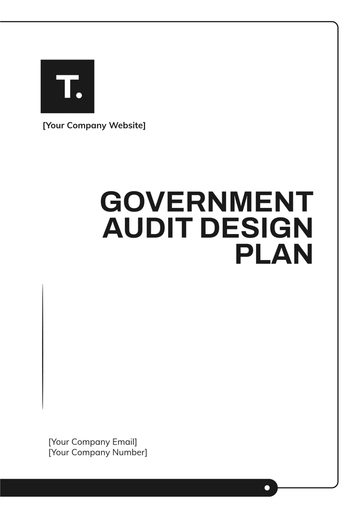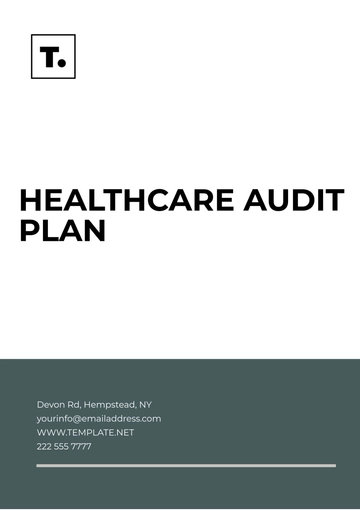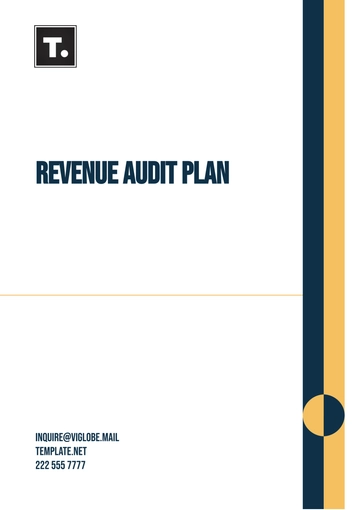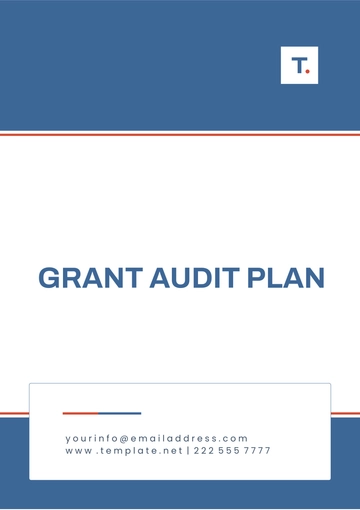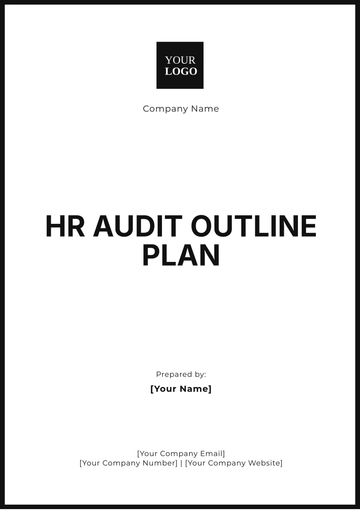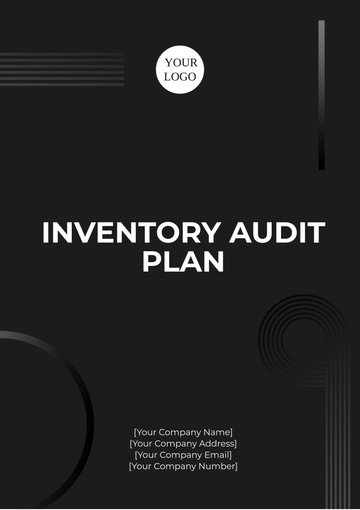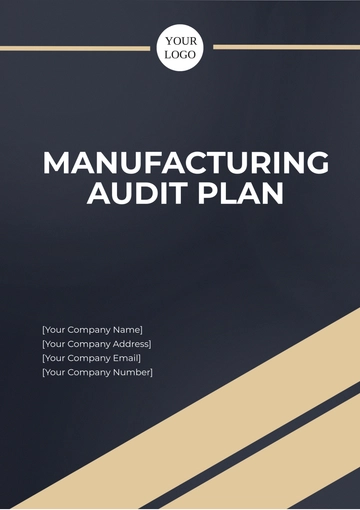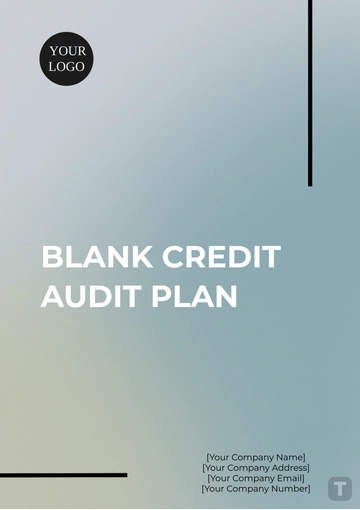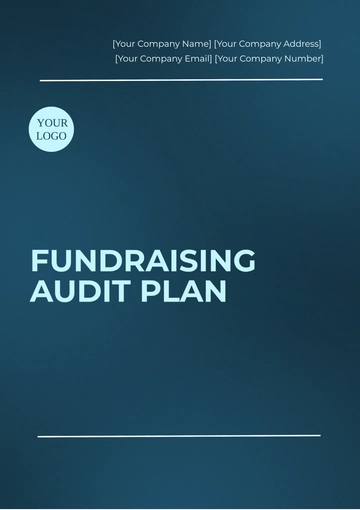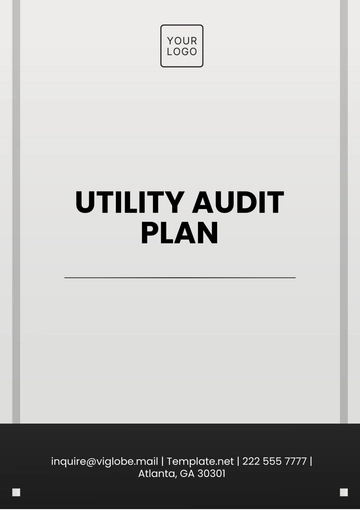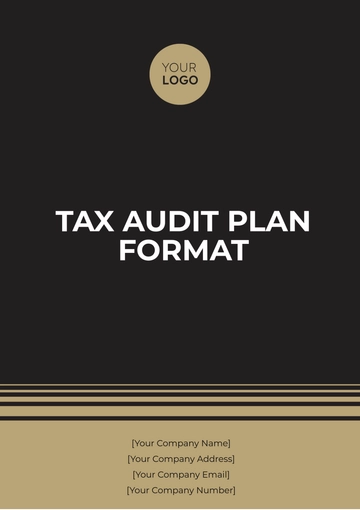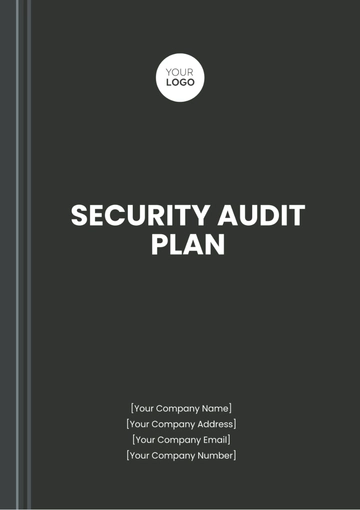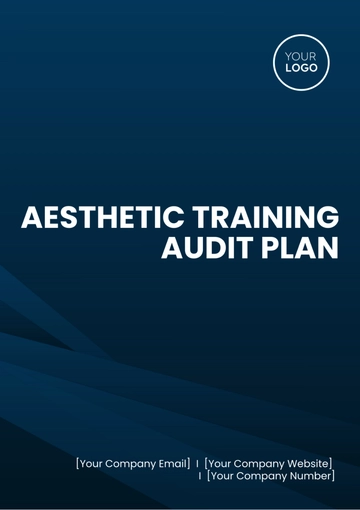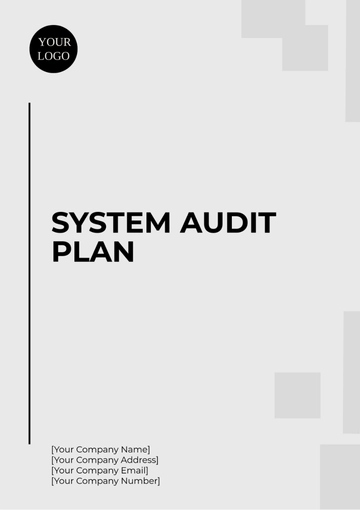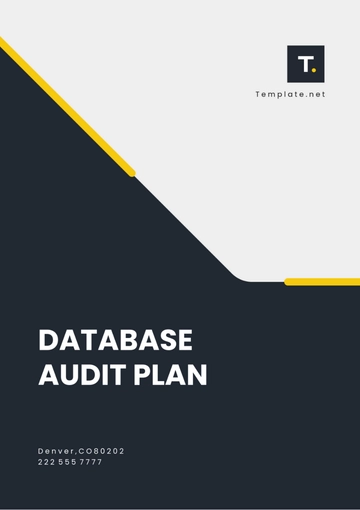Free Car Rental Audit Plan
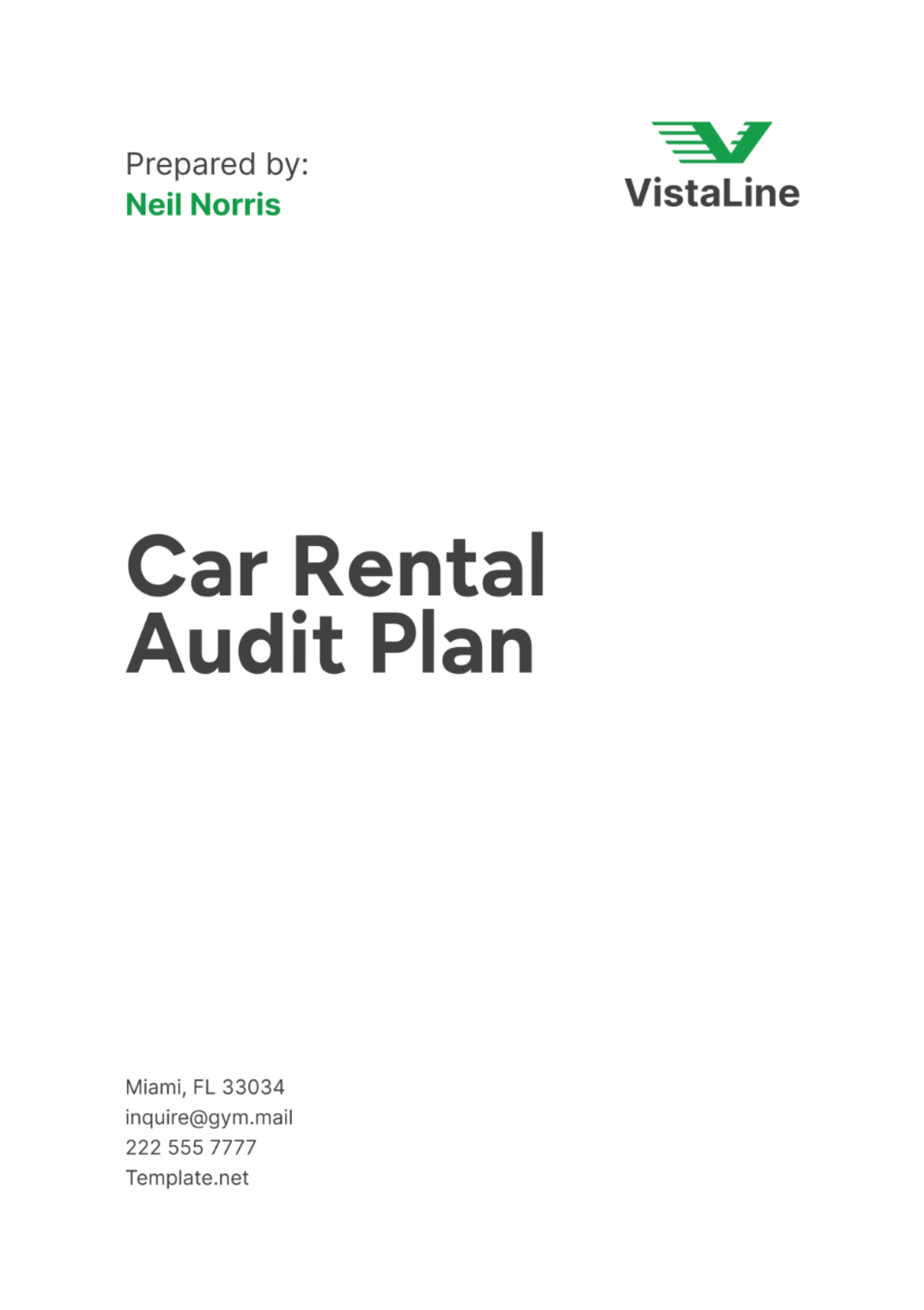
I. Introduction
A. Purpose of the Audit Plan
The purpose of this audit plan is to assess the operational effectiveness and regulatory compliance of [Your Company Name]. By conducting a comprehensive audit, we aim to identify opportunities for enhancing customer satisfaction, improving operational efficiency, and strengthening internal controls. This audit will also serve to mitigate risks associated with non-compliance and ensure alignment with industry standards and best practices.
B. Scope of the Audit
The audit will cover all aspects of [Your Company Name]'s operations, including vehicle procurement, rental agreements, customer interactions, financial transactions, and adherence to legal and regulatory requirements. It will encompass both physical locations and online platforms where services are offered to ensure a holistic evaluation of the company's operations.
C. Objectives of the Audit
Evaluate the accuracy and completeness of financial transactions, ensuring transparency and accountability in revenue recognition and expense management.
Assess the effectiveness of internal controls in safeguarding customer data and maintaining confidentiality in accordance with data protection regulations.
Identify areas for process improvement to streamline vehicle rental procedures, enhance customer service delivery, and optimize operational costs.
II. Audit Team and Responsibilities
A. Internal Audit Team Composition
The internal audit team consists of [Audit Team Leader], [Audit Team Member 1], and [Audit Team Member 2], each bringing specialized expertise in auditing, financial analysis, and operational management. The team is dedicated to conducting a thorough and unbiased assessment of [Your Company Name]'s operations.
B. Roles and Responsibilities of Team Members
[Audit Team Leader]: Oversees the planning, execution, and reporting phases of the audit, ensuring adherence to audit standards and objectives.
[Audit Team Member 1]: Focuses on financial audits, examining revenue recognition practices, expense controls, and financial reporting accuracy.
[Audit Team Member 2]: Assesses operational processes, including vehicle rental procedures, customer service standards, and compliance with regulatory requirements.
C. Coordination with Other Departments
Close collaboration with the Operations, Finance, Compliance, and Customer Service departments will ensure comprehensive audit coverage. Regular communication and data sharing will facilitate the gathering of accurate information and validation of audit findings across all relevant departments.
III. Audit Criteria and Standards
A. Regulatory Requirements
The audit is designed to thoroughly assess and confirm that [Your Company Name] is in full compliance with all pertinent local, state, and federal regulations that oversee and govern the practices of vehicle rental services. This comprehensive evaluation will encompass several areas, including but not limited to, the company’s adherence to mandatory insurance requirements, ensuring that all vehicles meet the established safety standards, compliance with environmental regulations that affect the vehicle rental industry, and adherence to consumer protection laws intended to safeguard the rights of customers.
B. Company Policies and Procedures
The process of evaluating internal policies and procedures will center on assessing their adequacy in promoting operational efficiency, managing risks, and ensuring compliance with both legal and ethical standards. This comprehensive review will encompass several key areas. Firstly, employee conduct policies will be examined to ensure they align with desired workplace behavior and ethical guidelines. Secondly, customer data protection measures will be scrutinized to confirm they meet the necessary regulatory requirements and effectively safeguard sensitive information. Thirdly, vehicle maintenance protocols will be reviewed to determine if they adequately ensure the safety and reliability of the fleet. Lastly, the terms of rental agreements will be inspected to verify that they are fair, transparent, and legally compliant.
Each of these areas will be carefully studied to identify strengths and potential areas for improvement, thereby ensuring that the organization operates efficiently, minimizes risk, and meets all relevant compliance standards.
C. Industry Best Practices
Undertaking benchmarking activities against the best practices prevalent in the industry will offer valuable insights into specific areas where [Your Company Name] can implement and adopt more advanced and superior processes and standards. This comprehensive benchmarking process will encompass various domains including, but not limited to, practices related to achieving excellence in customer service, effective and efficient fleet management, seamless technology integration, and the pursuit of sustainable business operations. By doing so, [Your Company Name] will be able to identify opportunities for improvement and innovation, thus elevating its overall performance and competitive edge in the market.
IV. Audit Planning
A. Risk Assessment
Identification of Key Risks
The primary risks that the organization faces encompass several critical areas. First and foremost, there is the risk of insufficient upkeep and maintenance of vehicles, which could result in operational breakdowns and interruptions. Another significant risk is the potential for breaches of customer data, which may occur if the cybersecurity measures in place are not robust enough to prevent unauthorized access or cyberattacks. Lastly, the organization is at risk of failing to uphold regulatory standards, which could lead to non-compliance with pertinent laws and regulations, consequently resulting in legal penalties and fines.
Risk Prioritization
Risks will be categorized in order of importance, taking into account how significantly they could affect various critical aspects of the company's well-being. Specifically, this prioritization will be based on the potential repercussions each risk could have on the company's reputation, its financial stability, the level of trust customers place in the company, and the continuity of its operations. Those risks that are identified as having a high priority, due to their severe potential impact, will be addressed without delay during the course of the audit process.
B. Audit Approach and Methodology
Document Review
A comprehensive and detailed examination of policies, procedures, contracts, financial records, and compliance documentation is conducted to guarantee that every aspect is complete and accurate, ensuring that all information and processes align with the required standards and regulations without any discrepancies.
Interviews with Key Personnel
We conducted detailed and organized interviews with both managers and staff members from various departments in order to collect firsthand insights. These interviews aimed to understand their operational practices, identify the challenges they face, and assess their efforts toward maintaining compliance. This comprehensive approach ensured that we obtained a thorough and nuanced understanding from multiple perspectives within the organization.
Observations and Inspections
Conduct thorough on-site inspections and detailed observations of vehicle rental facilities, customer service interactions, as well as the examination of physical assets. These efforts aim to rigorously verify that all operations conform to the established standards and best practices set forth by the organization.
C. Audit Schedule and Timeline
The audit will be conducted over [Time Frame], divided into distinct phases: planning, fieldwork, and reporting. A detailed schedule will outline specific milestones, deliverables, and deadlines to ensure timely completion and reporting of audit findings.
V. Audit Areas
A. Vehicle Rental Process
Booking and Reservation Procedures
Assessment of the efficiency and accuracy of booking systems, including the clarity of pricing structures and availability of vehicle options. Focus will be on ensuring transparency and ease of use for customers.
Vehicle Inspection and Maintenance
Evaluation of procedures for vehicle inspection, maintenance records, and response protocols to vehicle breakdowns. Emphasis will be placed on preventive maintenance practices to minimize rental disruptions.
Rental Agreement and Documentation
Review of rental agreement templates to ensure completeness, accuracy, and compliance with legal requirements. Analysis will include terms and conditions, insurance coverage details, and customer responsibilities.
B. Customer Service
Complaint Handling
Analysis of procedures for receiving, investigating, and resolving customer complaints. Review will assess responsiveness, fairness, and effectiveness in resolving issues to enhance customer satisfaction.
Customer Satisfaction Metrics
Review of customer feedback mechanisms, including surveys and reviews, to gauge satisfaction levels. Analysis will identify trends and areas for improvement in service delivery and customer experience.
C. Financial Controls
Revenue Recognition
Examination of procedures for recording rental revenues, including accuracy in billing, invoicing, and revenue reconciliation processes. Focus will be on ensuring compliance with accounting standards and internal controls.
Cash Handling and Deposits
Assessment of controls over cash transactions, including procedures for handling cash payments, deposits, and reconciliation. Evaluation will ensure safeguarding of company assets and prevention of fraudulent activities.
Expense Management
Review of expense approval processes, including policies for reimbursement and authorization of expenditures. Analysis will focus on efficiency in cost management and adherence to budgetary controls.
D. Compliance
Regulatory Compliance
Verification of compliance with insurance requirements, vehicle safety regulations, environmental standards, and consumer protection laws. Assessment will ensure adherence to legal obligations and mitigate regulatory risks.
Internal Policy Compliance
Assessment of adherence to internal policies related to employee conduct, ethical standards, customer privacy, and operational procedures. Review will identify gaps and areas requiring strengthened controls.
E. Safety and Security
Vehicle Safety Inspections
Inspection of vehicles to ensure compliance with safety standards and maintenance of safe operating conditions. Evaluation will include regular inspections and adherence to maintenance schedules.
Security of Customer Data
Evaluation of measures to protect customer information from unauthorized access, breaches, or misuse. Assessment will focus on cybersecurity protocols, data encryption, and employee training on data privacy.
VI. Audit Execution
A. Fieldwork Procedures
The audit team is set to carry out an extensive examination of various records, documents, and systems to ensure that every audit area is thoroughly covered. This approach will help identify any discrepancies, inefficiencies, or areas of concern that may need to be addressed. In addition to these detailed reviews, the team will also perform on-site inspections, allowing them to observe operations in their natural environment. These inspections will be complemented by conducting interviews with employees and other relevant personnel. These interviews are designed to glean firsthand insights into the day-to-day operational practices, providing the audit team with a holistic understanding of the processes and potential areas for improvement within the organization.
B. Testing and Sampling Methods
Various sampling techniques will be implemented as part of the analysis to evaluate the overall effectiveness of the internal controls and to meticulously verify the accuracy of the data being assessed. In doing so, both random sampling methods and specifically targeted sampling approaches will be utilized to ensure thorough validation of compliance with established organizational policies and the applicable regulatory requirements. Through this process, the objective is to provide a comprehensive assessment that will support the integrity and robustness of the controls and data within the system.
C. Data Analysis and Interpretation
The process of analyzing the findings will encompass several key steps. Firstly, we will undertake a detailed comparison of the observed practices against the established criteria or standards. This will involve meticulously examining the practices to identify any deviations or discrepancies. Once these deviations have been identified, we will assess their implications to understand their significance and impact. Following this comprehensive analysis, we will proceed to interpret the data with a view towards drawing meaningful insights. These interpretations will then serve as the foundation for formulating the audit's final conclusions and recommendations.
VII. Reporting
A. Audit Findings
Identified Issues and Observations
The audit identified instances of non-compliance with regulatory requirements, deficiencies in operational procedures affecting service delivery, and opportunities for cost savings or revenue enhancement.
Root Causes Analysis
Analysis of underlying causes contributing to identified issues, including gaps in policy adherence, inadequate training, or systemic inefficiencies.
B. Recommendations
Corrective Actions
Recommended actions include implementing enhanced vehicle maintenance protocols, updating rental agreement templates to ensure legal compliance, and improving customer complaint handling procedures.
Preventive Measures
Measures include conducting regular staff training on compliance and customer service standards, establishing ongoing audits of financial transactions, and enhancing cybersecurity measures.
C. Management Responses and Action Plans
Management will review audit findings, agree on action plans, and assign responsibilities for implementation. Timelines and performance indicators will be established to monitor progress and ensure timely execution.
VIII. Follow-up and Monitoring
A. Implementation of Recommendations
The advancement and development of the process of implementing corrective actions and preventive measures will be systematically monitored and recorded in detail in order to effectively address and resolve any identified issues or problems.
B. Post-Audit Reviews and Assessments
Subsequent audits will be carried out in an effort to ascertain the effectiveness of the changes that have been put into place and to deal with any remaining risks that may still be present. Additionally, these reviews will serve to ensure ongoing adherence to relevant standards and regulations, as well as to facilitate continuous improvement in processes and practices.
C. Continuous Improvement Initiatives
Initiatives are poised to concentrate extensively on nurturing a culture that embraces continuous improvement. This objective will be achieved through the implementation of ongoing monitoring techniques, the establishment of effective feedback mechanisms, and the development of comprehensive staff training programs. Additionally, insights gained from audits will serve as valuable lessons that will inform and guide future enhancements to operational practices, ensuring a continually evolving and improving organizational framework.
IX. Conclusion
A. Summary of Audit Results
The audit conducted by [Your Company Name] meticulously highlighted not only the areas where the company exhibits considerable strength but also pinpointed specific opportunities for improvement that can be leveraged for future growth. The commitment demonstrated by the company's management to thoroughly address and act upon the audit findings is anticipated to significantly enhance not only the operational efficiency of the company but also the overall satisfaction of its customers.
B. Lessons Learned
The insights and knowledge gained from the audit process will serve as a crucial foundation for shaping and guiding future audit plans. This information will also contribute to enhancing and refining overall business practices. A commitment to continuous learning and adaptability will be essential in upholding high standards of service and ensuring strict compliance.
C. Closing Remarks
[Your Company Name] remains committed to upholding its reputation for excellence in service, compliance with regulatory standards, and operational efficiency. The findings and recommendations of this audit plan will serve as a roadmap for achieving these goals.
- 100% Customizable, free editor
- Access 1 Million+ Templates, photo’s & graphics
- Download or share as a template
- Click and replace photos, graphics, text, backgrounds
- Resize, crop, AI write & more
- Access advanced editor
Enhance your auditing process with the Car Rental Audit Plan Template from Template.net. This fully editable and customizable template, powered by our AI Editor Tool, simplifies creating detailed audit plans tailored to your business needs. Ensure compliance, efficiency, and operational excellence with ease. Get your Car Rental Audit Plan Template now on Template.net.
You may also like
- Finance Plan
- Construction Plan
- Sales Plan
- Development Plan
- Career Plan
- Budget Plan
- HR Plan
- Education Plan
- Transition Plan
- Work Plan
- Training Plan
- Communication Plan
- Operation Plan
- Health And Safety Plan
- Strategy Plan
- Professional Development Plan
- Advertising Plan
- Risk Management Plan
- Restaurant Plan
- School Plan
- Nursing Home Patient Care Plan
- Nursing Care Plan
- Plan Event
- Startup Plan
- Social Media Plan
- Staffing Plan
- Annual Plan
- Content Plan
- Payment Plan
- Implementation Plan
- Hotel Plan
- Workout Plan
- Accounting Plan
- Campaign Plan
- Essay Plan
- 30 60 90 Day Plan
- Research Plan
- Recruitment Plan
- 90 Day Plan
- Quarterly Plan
- Emergency Plan
- 5 Year Plan
- Gym Plan
- Personal Plan
- IT and Software Plan
- Treatment Plan
- Real Estate Plan
- Law Firm Plan
- Healthcare Plan
- Improvement Plan
- Media Plan
- 5 Year Business Plan
- Learning Plan
- Marketing Campaign Plan
- Travel Agency Plan
- Cleaning Services Plan
- Interior Design Plan
- Performance Plan
- PR Plan
- Birth Plan
- Life Plan
- SEO Plan
- Disaster Recovery Plan
- Continuity Plan
- Launch Plan
- Legal Plan
- Behavior Plan
- Performance Improvement Plan
- Salon Plan
- Security Plan
- Security Management Plan
- Employee Development Plan
- Quality Plan
- Service Improvement Plan
- Growth Plan
- Incident Response Plan
- Basketball Plan
- Emergency Action Plan
- Product Launch Plan
- Spa Plan
- Employee Training Plan
- Data Analysis Plan
- Employee Action Plan
- Territory Plan
- Audit Plan
- Classroom Plan
- Activity Plan
- Parenting Plan
- Care Plan
- Project Execution Plan
- Exercise Plan
- Internship Plan
- Software Development Plan
- Continuous Improvement Plan
- Leave Plan
- 90 Day Sales Plan
- Advertising Agency Plan
- Employee Transition Plan
- Smart Action Plan
- Workplace Safety Plan
- Behavior Change Plan
- Contingency Plan
- Continuity of Operations Plan
- Health Plan
- Quality Control Plan
- Self Plan
- Sports Development Plan
- Change Management Plan
- Ecommerce Plan
- Personal Financial Plan
- Process Improvement Plan
- 30-60-90 Day Sales Plan
- Crisis Management Plan
- Engagement Plan
- Execution Plan
- Pandemic Plan
- Quality Assurance Plan
- Service Continuity Plan
- Agile Project Plan
- Fundraising Plan
- Job Transition Plan
- Asset Maintenance Plan
- Maintenance Plan
- Software Test Plan
- Staff Training and Development Plan
- 3 Year Plan
- Brand Activation Plan
- Release Plan
- Resource Plan
- Risk Mitigation Plan
- Teacher Plan
- 30 60 90 Day Plan for New Manager
- Food Safety Plan
- Food Truck Plan
- Hiring Plan
- Quality Management Plan
- Wellness Plan
- Behavior Intervention Plan
- Bonus Plan
- Investment Plan
- Maternity Leave Plan
- Pandemic Response Plan
- Succession Planning
- Coaching Plan
- Configuration Management Plan
- Remote Work Plan
- Self Care Plan
- Teaching Plan
- 100-Day Plan
- HACCP Plan
- Student Plan
- Sustainability Plan
- 30 60 90 Day Plan for Interview
- Access Plan
- Site Specific Safety Plan
